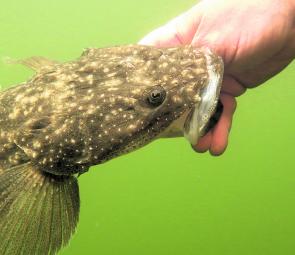Flathead are one of Australia’s most iconic and readily available fish. They’re also a great target on which to hone your fishing skills, or try out a new technique… And best of all, they’re on the chew right now!
You’ve got to love the humble, abundant and almost always willing flathead clan. There are more than 30 different species of these ugly but tasty bottom dwellers living in our salt and brackish waters, and at least a couple of varieties are available almost anywhere you might care to cast a line, right around Australia’s vast seaboard. Up north and over in the West you’ll mostly catch bar-tails. Along the east coast we have sandies and tigers offshore, along with the jumbo member of the clan — the dusky — lurking in our estuaries. Down south there are blue spots and rock flathead, plus even more sandies and tigers. In short, wherever you go, there’s no shortage of flatties!
Flathead are also not a particularly difficult fish to catch. They’re opportunistic predators and occasional scavengers, spending much of their time lying motionless and well camouflaged on the sea floor or riverbed. However, if something vaguely edible happens to swim, crawl or drift by, these reptilian fish are incredibly quick over a distance of a metre or two. They also have an over-sized mouth lined with small, sharp teeth: a mouth primarily designed for one-way traffic.
Favourite tucker for flathead includes all sorts of little (and not so little!) fish, as well as prawns, crabs, octopus, squid, yabbies or nippers and various marine worms. But they’ll eat bits of dead animals, too.
The biggest trick to catching flathead is to remember that they’re almost always more likely to grab something that’s moving. These fish really do seem to be attracted and excited by motion and action.
One of the best ways to achieve constant bait movement is to drift with the wind or tide in a boat, kayak or canoe while your weighted and baited lines drag slowly along the bottom behind you. If you’re land-based, the same result can be achieved by slowly retrieving line, or even shuffling backwards up the beach or bank after making a cast.
The flathead’s fondness for hitting a moving target also makes it a sucker for many lure and flyfishing strategies. It’s no accident that a flathead is often the first saltwater species racked up by any newcomer to lure and flyfishing. The only real trick to success lies in ensuring that your artificial bait stays within a metre of the bottom at all times, whether trolling or retrieving. Closer to the bottom is even better, and making occasional contact with the sand or mud is best of all.
Perhaps the deadliest method yet devised for catching flathead on rod and reel is to throw out a 7-12cm long soft plastic (a shad, T-tail or curly-tailed grub will do the job) rigged on a 7-14g (1/4-1/2oz) jighead, carrying a 1/0-4/0 hook. Let this lure sink all the way to the bottom, then give it a reasonably sharp flick or two, retrieve the slack line generated and repeat… all the way back to the rod tip. Keep doing this — making sure the lure regularly falls back to the seabed — and you WILL catch flathead, I assure you… It’s honestly as simple as that!
The colour of the lure isn’t usually all that important, either. Try natural tones in clearer water or bright hues such as hot pink and chartreuse (lime green) in dirtier or darker conditions. Or black. Or white. They all work!
Spring is prime flathead time in most parts of the country, so get out there in the next few weeks and give it a crack!
1
The dusky flathead is the giant of the clan, very occasionally topping a metre in length and giving the 10 kg mark a nudge. However, most of those caught by anglers will measure between 35-80cm.
2
Flathead are masters of camouflage and ambush. That big mouth is lined with small, sharp teeth and rarely misses its mark.
3
There are few better targets than flathead with which to open your saltwater flyfishing account. They love a streamer-style fly!
4
Flathead settle and bury into the sand between ambush assaults, often leaving clearly discernible ‘lies’ that can be easily spotted at low tide.
Reads: 2589







